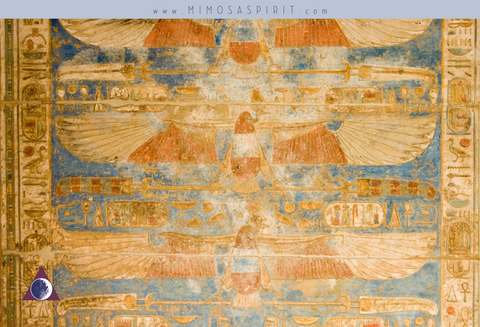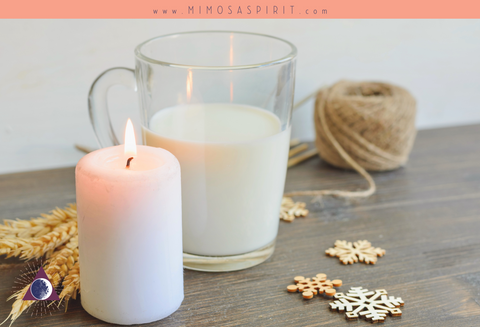
Japa Malas: Working with Mala Beads
Japa malas, often simply called mala beads, are strings of beads used for counting repeated prayers, mantras, divine names or affirmations. They're very much like a Catholic rosary. The Buddhist or Hindu mala has 108 beads, plus a tasseled “guru” bead, the bead that starts and ends the repetitions. Some also have three “spacer” beads for conveniently dividing the recitations.
The Significance of Mala Beads:
The number 108 is significant to both Hindu and Buddhists, and it’s said there are 108 meanings of the number, including the number of deities, the 108 sins we must overcome, etc. The mala helps connect the physical act of reciting the mantra with the spiritual benefits of the practice.
The mala itself is not passive, but actively transmutes energy, and wearers should be conscious of this power. For one thing, if you wear the mala as jewelry, it’s apt to collect all kinds of stray energy present in the everyday world – not all of it beneficial. Some even prefer to keep the mala in a special bag and handle it only when in use. Whether you choose to keep your japa malas protected or to perform regular energetic cleansing, a mala well cared for absorbs considerable pure energy from use in sacred practice.
Cleaning & Cleansing Your Mala Beads:
A mala shouldn’t need much physical cleansing. In fact, the oils of the skin that penetrate the material of the mala are said to help the wearer to form a bond with their mala. However, your mala may need energetic cleansing from time to time, especially if you wear it while under stress. Sound can purify the mala; either ring tingshas over it, or place it in a singing bowl and then softly strike the bowl to cleanse it. Another simple method is to expose the mala to either strong sunlight or moonlight. Typically, malas are used in conjunction with incense for meditative, prayer, or ritual purposes, which can also cleanse your mala beads. In addition, it’s considered strongly positive to have the mala blessed by a spiritual teacher or guru, especially at first.
How to Use Japa Malas:
There are variations on ways of using japa malas, but here’s a good basic method: To count with the mala, most traditions specify you should hold the mala with your right hand. Using the thumb and the fourth finger to hold the mala, pull the beads toward you with your third finger, starting with the one next to the guru bead. Chant one repetition per bead until you return to the guru. (There are variations on which fingers to use, but most agree you should avoid using the index finger, which denotes ego.) If you’re doing more than 108 repetitions, when you get to the guru bead, turn the mala around and go back the other way. It’s important not to “run over” the guru bead.
Malas are made from many materials, which carry different meanings:
Crystal Mala: The properties of the crystal used to make the beads apply to these malas. Crystal has the benefit of being smooth, and substantial in weight.
Rudraksha Seed Mala: Rudra is another name for Shiva, and aksha means eye. The tears of Lord Shiva destroy ego and attachment, and also promote healing, protection, and strong blood flow. These malas are best used by those leading a pure life.
Bodhi Seed Mala: Bodhi (holy) tree is another name for the Sacred Fig, the tree the Buddha sat under when he gained enlightenment. As you might guess, the words buddha and bodhi related, both having to do with enlightenment.
Tulsi Wood Mala: Also called Sacred Basil. Hindus consider this plant–more a large shrub than a tree–to be a living goddess. A tulsi mala clears the aura and strengthens devotion, and is especially holy to Vishnu. Tulsi tea an elixir of life that helps with stress, pain, adaptation; tulsi wood contains many of these same properties.
Sandalwood Mala: The scent of sandalwood conveys inner peace. A mala made of sandalwood is good for deepening meditation, calming, and seeking after the within. Real sandalwood is growing rarer. Beads carved of real sandalwood are oblong, smooth and somewhat uneven. The scent of real sandalwood is subtle, but it remains present in the wood as the mala ages.
Rosewood: A mala made of rosewood excels in healing the self and others, as well as the manifestation of whatever is needed for healing.
Bone: Yak bone is a common material for Tibetan malas, and encourages the owner to contemplate mortality. Accepting the reality of impermanence helps us focus on living in the present moment. Sometimes bone beads are carved into little skulls. Using its bone for a sacred item like a mala honors the yak.
 Lotus seed Mala: Lotus petals deflect water, and so the lotus mala symbolizes the “falling away” of worldly things the understanding of impermanence. Since lotus seeds are light, they darken with age even more than other materials. Perhaps that’s why they symbolize the steady growth of wisdom and power. Lotuses and their seeds symbolize overcoming hardship and adversity.
Lotus seed Mala: Lotus petals deflect water, and so the lotus mala symbolizes the “falling away” of worldly things the understanding of impermanence. Since lotus seeds are light, they darken with age even more than other materials. Perhaps that’s why they symbolize the steady growth of wisdom and power. Lotuses and their seeds symbolize overcoming hardship and adversity.





0 comments